Bicycle bell: types, selection, installation
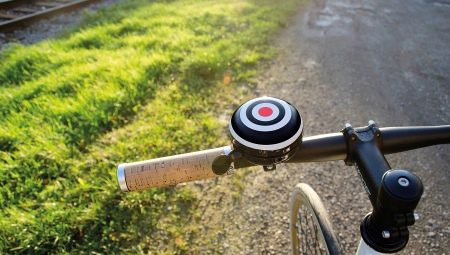
You can ride a bike without a bike bell. But still it is quite justified to use it. You just need to know what models and according to what principles to select, what to look for.
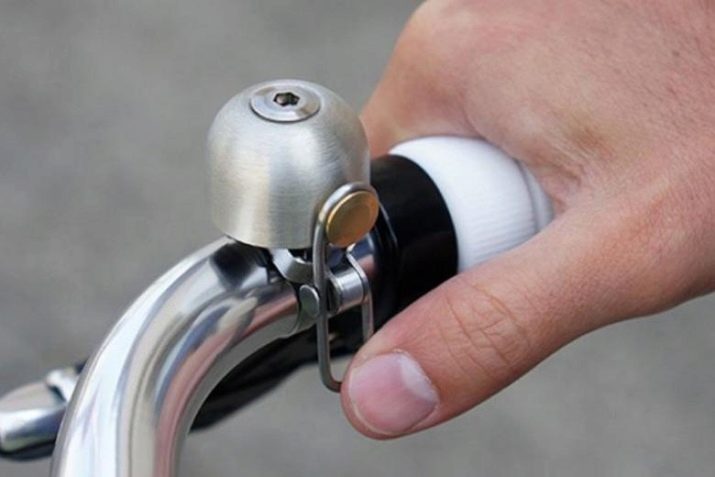
Varieties and specifics
The bicycle bell should not be considered some kind of fashion accessory, hobby, or toy for children. This is a very important way of identifying yourself on the road. With the help of a call, the cyclist defends his rights as a participant in the movement. Since childhood, the melodic sound of a mechanical bell has been imprinted in the memory of many people. But times have changed - and now there are many more variations of the bike signal to choose from.
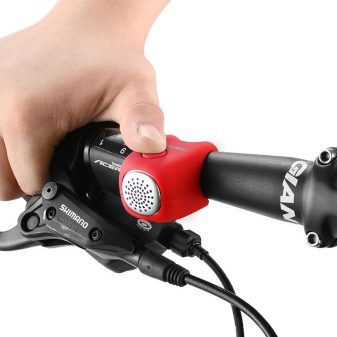
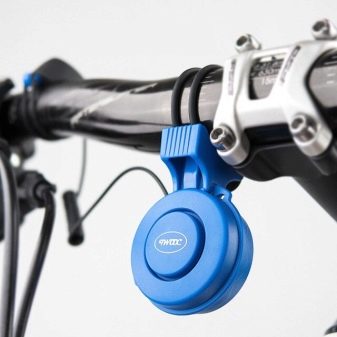
A true classic is the very "mechanics". The indisputable argument in its favor is that the sound emitted cannot be confused with anything. There is an even simpler option - the so-called mechanical percussion bell. When bending the "tongue", it hits the metal. In most cases, pedestrians will hear such a sound, but its volume is no longer enough to alert motorists.
Klaxon works in the same way as a similar attachment for a car. A pear made of rubber connected to a plastic or metal tube, it also creates a familiar sound. The specific sound is determined by the length and thickness of the tube.

But the bicycle bell can be of a more modern design - with the use of electronic components. In fact, he reproduces the device of similar devices used in houses and apartments.
The advantages of an electronic device are:
- relatively small value;
- lack of wires;
- rather high volume of work, sufficient even with busy traffic;
- the presence of quite different melodies.
There is only one drawback, but a very significant one - it is difficult for those who have heard it to associate the sound with the cyclist. There are too many loud noises in the city, and the signal emitted by the electronic call easily "drowns" in all this cacophony.
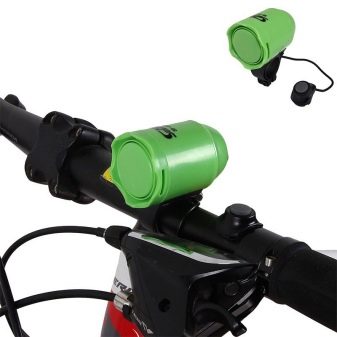
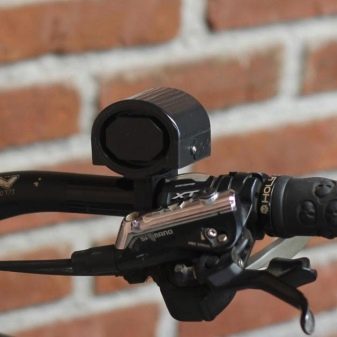
A good alternative is pneumatic horn... It works simply: first you need to pump up the tank with air, then discharge the air through the "funnel". Then you get a rather loud signal, which is hard to miss.
Some pneumatic horn models are equipped with disposable cylinders. It is even easier to use them: there is no need to pump the pump and fill a container with air. The disadvantages of the device are the flip side of its advantages. So, the sound turns out to be not only loud, but also sharp, capable of shocking or frightening.
Older people and those with a disturbed nervous system can even have unpleasant health consequences.
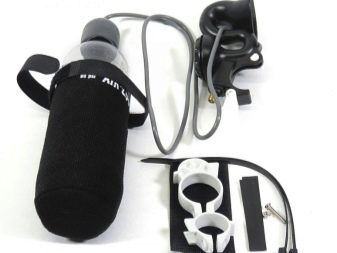

That's why it is highly undesirable to use pneumatic horns within the city. Especially on the street, in a park or in another place where a lot of people are gathered. Moreover, drivers or other cyclists, under the influence of a sharp sound, can make unexpected maneuvers. The pneumatic signal, on the other hand, is useful on the roads outside of settlements and in remote parts of cities - there it perfectly scares away dogs.
Another plus is that it is a backup alert in an emergency. As for the models with replaceable cylinders, they are worse than it might seem. Saving time turns into the fact that you have to carry a supply of cylinders with you, especially on a long journey, when you have to honk more than once. Conventional pneumatics with a pump ultimately prove to be more practical. And it's not so difficult to pump up the air as beginners sometimes think.
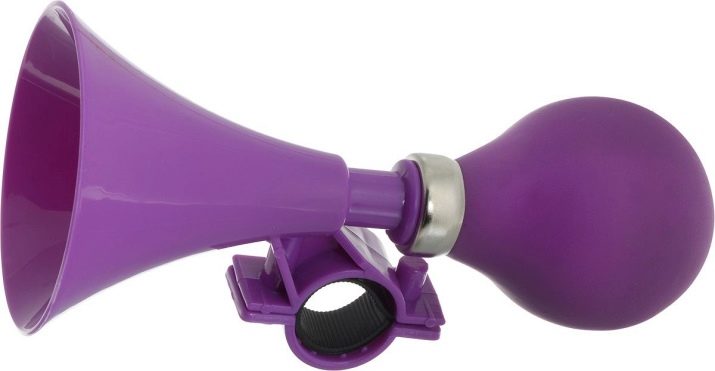
How to choose?
It is worth noting that doubts about whether cyclists should use horns are unfounded. It will bring undoubted benefits for three reasons:
- you can easily remind yourself to careless, inattentive pedestrians or other cyclists;
- it will be possible to drive quickly on public roads, notifying drivers of themselves by ringing;
- there is no danger of being fined or punished for violating traffic rules (according to the rules, you must have a call).

Now let's see how to properly solve these three problems. The easiest option is to choose a mechanical bell. Many budget bicycles are equipped with such devices. Signaling devices of this kind are the cheapest, as you might guess. Anyone who is somewhat tech-savvy will be able to make a mechanical bell themselves. They can also have a wide variety of designs.
However, as already mentioned, the mechanics are unable to make a loud sound. A stronger signal is needed to drive in a metropolis or a busy intercity (suburban) road... In addition, mechanical bells are unstable in damp, frosty weather. Just during the rain, when visibility decreases and the role of sound increases, it gets even worse.
But for fans of retro bicycles and demonstration trips on them, this solution will be ideal.
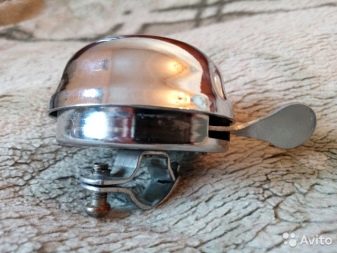

The Klaxon, however, is also in keeping with the retro spirit. Its pros and cons are the same. The exception is the air horn (pneumoclaxon); it sounds louder due to the compressed air supply. The standard kit includes:
- horn bell;
- air release button;
- clamps;
- hose;
- the actual balloon.
Some cylinders are manufactured at the factory (they are disposable), while others can be reused after being inflated with a pump. A makeshift air chamber is often a plastic bottle.
Perhaps, the pneumatic bell can be recognized as one of the loudest devices on the list. But putting it on the steering wheel is unlikely to work - it's too cumbersome. And the extra weight, the change in the centering of the bike will not please anyone.

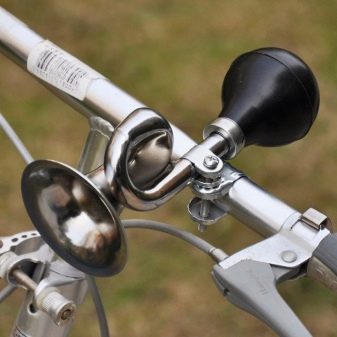
A more modern option for a road bike is the electronic bell. It is not larger than a mechanical one, while it can make rather loud sounds. Power is supplied from a conventional battery. The appearance varies significantly - there are hundreds of modifications. The difference can also apply to sounds: they are set using the controller.

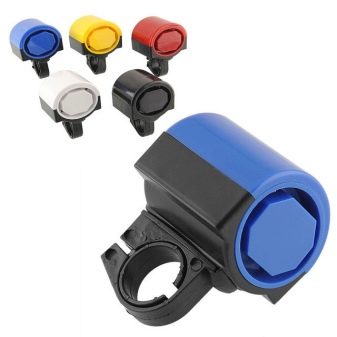
But it should be borne in mind that some electronic sounds are frankly unnatural. Not only may other road users not recognize them as a signal from a bicycle, but also the sound of cyclists themselves is sometimes annoying.
To summarize, we can say this:
- in cities, provided a quiet ride on the sidewalk, a mechanic or a horn is better suited;
- on intercity routes and highways, it is better to use pneumatic devices;
- in all other cases, it is better to give preference to a reliable electronic call.

Melodies and other subtleties
For an e-bike, the best choice is electric bell. It costs more than a mechanical one, but bypasses it in most indicators. For an adult bicycle for a respectable person who does not want to disturb others in vain, you need to choose minimalistic devices with a single signal. If it has a non-standard frequency, then it will immediately attract the attention of people around. For children and young people, partly for people with a cheerful disposition, models with "comic" sounds are suitable.
Important: when choosing any device, you must ask to be given a listen to it. Then there will be no unpleasant surprises. You should not be guided by a ringtone for a mobile phone: this way only the simplest and most stereotyped "bicycle" sounds are recorded.
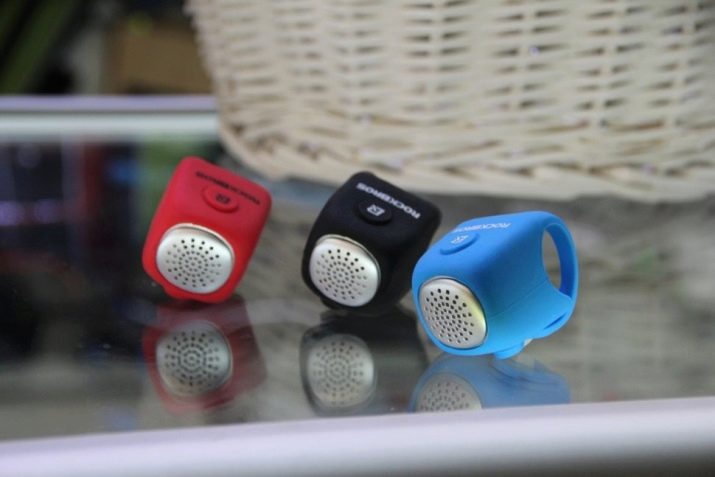
The original solution would be horn-lamp... This is not only a light and sound signal, but also an excellent device for scaring off intrusive people or aggressive animals.
Both the flashlight and the sound component can operate in different modes. This is typical even for relatively cheap devices assembled in Asian countries.

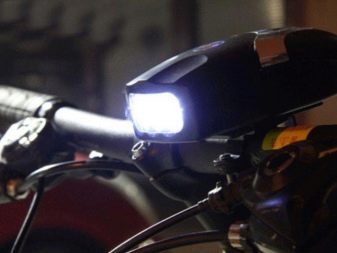
An electric alarm for a bicycle can be combined with more than just a siren. An even more original option is police sound device... Such a solution will allow you to notify other road users about yourself in the rain, at night, and in dense fog.
But we must remember that at any time in Russia another ban may be introduced - this time on the imitation of police signals by cyclists. When people in uniform are nearby, you should definitely not turn on the light and sound signal - it is better not to annoy the guards. It should also be noted that such devices usually do not allow you to select an alternative melody. And their volume is too high, and it is difficult to regulate or not, in general.
For long journeys in uninhabited areas or even just on highways, it is advisable to choose models with a compass.


As for the melodies, then AirZound is considered the loudest version of the horn. Its sound reaches 115 dB. However, you can always adjust the volume if necessary. Conventional mechanical bells with a copper and brass working part sound very clean and melodic.
In any case, it is better to listen to the melody in advance, and not rely on ready-made descriptions.
For an overview of the bike bell, see the next video.








